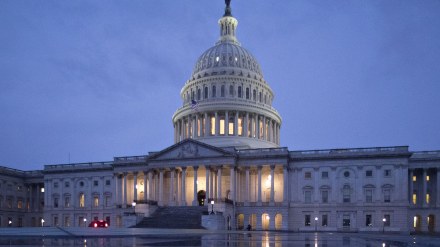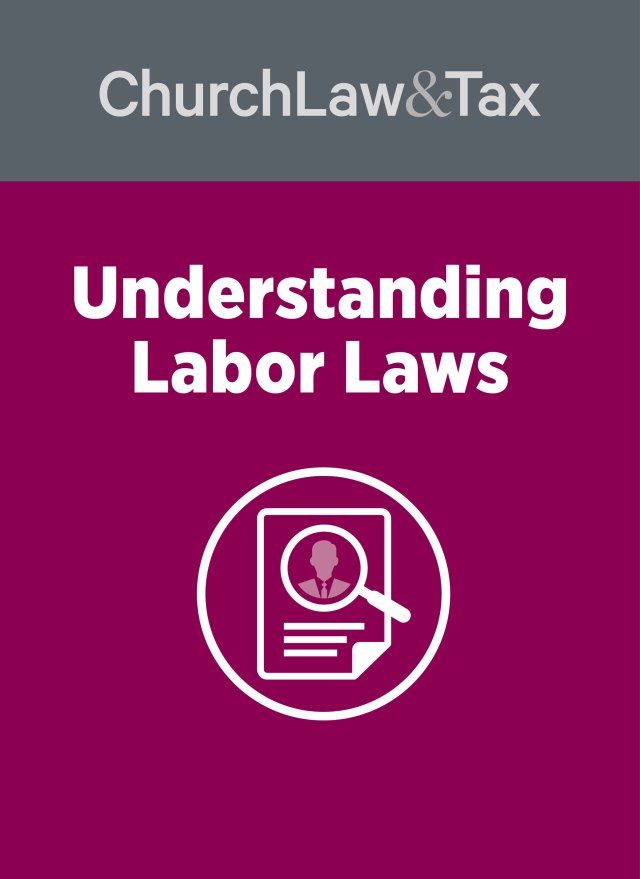Editor’s Note: Additional updates regarding the CARES Act and its various provisions can be found on Church Law & Tax’s coronavirus coverage page.
The 900-page, $2.2 trillion Coronavirus Aid, Relief, and Economic Security (CARES) Act became law on March 27, 2020. It is the third package enacted by Congress in response to the COVID-19 (coronavirus) outbreak.
I have written a detailed analysis regarding key provisions from the CARES Act that are most relevant to churches and church staff. It is accessible to members of ChurchLawAndTax.com. Below is a brief, free overview covering some of these key provisions.
Key Provisions of the Act
Individual help
All US residents with adjusted gross income up to $75,000 ($150,000 married), who are not a dependent of another taxpayer and have a work eligible Social Security number, are eligible for the full $1,200 ($2,400 married) rebate. In addition, they are eligible for an additional $500 per child. This is true even for those who have no income, as well as those whose income comes entirely from non-taxable means-tested benefit programs, such as Supplemental Security Income (SSI) benefits.
Key point. The rebate is treated like other refundable tax credits, such as the child tax credit and earned income tax credit, and is not considered taxable income. For the vast majority of Americans, no action on their part will be required to receive a rebate check since the Internal Revenue Service (IRS) will use a taxpayer’s 2019 tax return if filed (or their 2018 return if they haven’t filed their 2019 return).
Employee retention credit
- This is a credit designed to prevent layoffs and keep workers on the job.
- Tax-exempt employers are eligible.
- Eligible employers are allowed a credit against employment taxes (FICA, income tax) based on a specific formula. The fully refundable credit would be available to any business or non-profit that has a furloughed or reduced workforce as a result of a forced closure or the quarantining of employees. The credit would also be available to any business that has seen a 50 percent drop in gross receipts when compared to the same quarter last year.
- A special rule applies to eligible small employers (those with 100 employees or less) that provides a 50-percent credit for all wages paid, regardless of whether employees are furloughed or not.
- The credit is capped and is refundable against payroll taxes.
Key point. If an eligible employer receives a forgivable loan under the Paycheck Protection Program (see below), it is not eligible for the employee retention credit under this section.
Paycheck Protection Program (PPP)
- The Act establishes a new US Small Business Administration loan program called the Paycheck Protection Program for small employers (including nonprofits and churches) with 500 or fewer employees to help prevent workers from losing their jobs and small businesses from failing due to economic losses caused by the COVID-19 pandemic.
- The program provides federally guaranteed loans to cover payroll and other operating expenses.
- To be eligible, the small employer must have been harmed by the pandemic between February 15, 2020, and June 30, 2020. The Act requires eligible borrowers to make a good-faith certification that:
- the loan is necessary due to the uncertainty of current economic conditions caused by COVID-19; and
- they will use the funds to retain workers and maintain payroll, lease, and utility payments.
- The program is retroactive to February 15, 2020, to help bring workers who may have already been laid off back onto payrolls.
- Applicants can apply for this loan until August 8, 2020. (Editor’s Note: Congress passed another bill—which President Trump signed on July 4, 2020—that extends the deadline for PPP loan applications to August 8, 2020.)
- The program provides loans of up to 250 percent of an employer’s average monthly payroll costs for the one-year period preceding the loan (excluding compensation over $100,000).
- The loan is forgiven in full if, during the eight-week period beginning when the church receives the loan, the money is spent entirely on:
- payroll costs (the SBA requires at least 60 percent of the loan eligible for forgiveness be used for payroll costs)
- group health care expenses
- interest on any mortgage obligations
- rent, including rent under a lease agreement
- interest on debt incurred before February 15, 2020
- utilities
Key point. The SBA released an updated “frequently asked questions” document on April 26, 2020, in which it states that a minister’s housing allowance is considered part of “payroll costs.” The document includes this question and answer:
Question: Does the cost of a housing stipend or allowance provided to an employee as part of compensation count toward payroll costs?
Answer: Yes. Payroll costs includes all cash compensation paid to employees, subject to the $100,000 annual compensation per employee limitation.
- The amount of loan forgiveness is reduced based on an employer’s reduction in workers or wages according to a formula (but declines between February 15, 2020, and April 26, 2020, do not reduce the amount of loan forgiveness if the employer returns to pre-decline levels by June 30, 2020).
- Any portion of a loan not forgiven is carried forward as an ongoing loan with a term of five years at 1 percent interest.
- The recipient applies for forgiveness through the lender.
Key point. If an eligible employer receives an employee retention credit (see above), it is not eligible for the Paycheck Protection Program.
Key point. Learn more about how churches can apply for the Paycheck Protection Program through this article.
Key point. The SBA has issued a fact sheet providing additional specific details about the Paycheck Protection Program loans, along with the application form to use.
Paycheck Protection Program and Health Care Enhancement Act (CARES Act II)
The CARES Act appropriated $349 billion for PPP. However, the program met with immediate success and the initial appropriation was depleted in a few weeks. Congress quickly responded by enacting the “Paycheck Protection Program and Health Care Enhancement Act” (PPPHCE), the main provision of which was a boost in appropriated funds for PPP. Starting April 27, 2020, this allows the government to continue providing forgivable loans to cover the cost of payroll and operating expenses for small businesses.
Other provisions in the PPPHCE Act include:
- $60 billion for the SBA’s economic injury disaster loans and grants, including: $50 billion for economic injury disaster loans up to $2 million with interest rates not to exceed 4 percent and long-term repayment periods of up to 30 years, and $10 billion for grants of up to $10,000 that do not have to be repaid.
- $75 billion to support the American healthcare system, including additional funding to reimburse hospitals and healthcare providers for lost revenues and expenses related to the outbreak.
- $25 billion to expand testing, which will provide information on where cases are occurring, and support continued efforts to reopen communities and reignite the economy.
Unemployment insurance provisions
The CARES Act was designed to mitigate the economic effects of the COVID-19 pandemic in a variety of ways. One important way is the creation of a new temporary federal program called the Pandemic Unemployment Assistance (PUA) program that provides (through December 31, 2020) payment to those not traditionally eligible for unemployment benefits. PUA provides up to 39 weeks of unemployment benefits. Individuals receiving PUA benefits may also receive the $600 weekly benefit amount (WBA) under the Federal Pandemic Unemployment Compensation (FPUC) program if they are eligible for such compensation for the week claimed.
Eligibility for PUA includes those individuals not eligible for regular unemployment compensation or extended benefits under state or federal law, including those who have exhausted all rights to such benefits. Covered individuals also include self-employed individuals, those seeking part-time employment, and individuals lacking sufficient work history.
The application of these provisions to church employees is unclear. State and federal laws exempt from unemployment taxes “service performed in the employ of a church, a convention or association of churches, or an organization that is operated primarily for religious purposes and that is operated, supervised, controlled, or principally supported by a church or convention or association of churches.”
Does the CARES Act’s temporary Pandemic Unemployment Assistance program apply to church employees on the ground that they “are not traditionally eligible for unemployment benefits”? A recent Department of Labor “Unemployment Insurance Program Letter” (No. 16-20) suggests that it may. It reads, in part:
The CARES Act was designed to mitigate the economic effects of the COVID-19 pandemic in a variety of ways. The CARES Act includes a provision of temporary benefits for individuals who have exhausted their entitlement to regular unemployment compensation as well as coverage for individuals who are not eligible for regular unemployment compensation . . . . These individuals may include . . . clergy and those working for religious organizations who are not covered by regular unemployment compensation, and other workers who may not be covered by the regular unemployment compensation program under some state laws.
Check with your state unemployment office to see if church employees in your state qualify for the PUA and WBA programs.
Charitable contributions
The Act encourages Americans to contribute to churches and charitable organizations in 2020 by permitting them to deduct up to $300 of cash contributions, whether they itemize their deductions or not.
Payroll taxes
- The Act provides a refundable payroll tax credit for 50 percent of wages paid by employers to employees during the COVID-19 crisis. The credit is available to employers whose (1) operations were fully or partially suspended, due to a COVID-19-related shut-down order, or (2) gross receipts declined by more than 50 percent when compared to the same quarter in the prior year.
- The Act allows employers and self-employed individuals to defer payment of the employer share of the Social Security tax they otherwise are responsible for paying to the federal government with respect to their employees. Deferral is not available to employers receiving assistance through the Paycheck Protection Program of the CARES Act.
Delay of certain deadlines
- In March of 2020 the IRS announced that taxpayers generally have until July 15, 2020, to file and pay federal income taxes originally due on April 15. No late-filing penalty, late-payment penalty, or interest will be due. This means that anyone, including Americans who live and work abroad, can now wait until July 15 to file their 2019 federal income tax return and pay any tax due. IR-2020-58.
- A few weeks later, in Notice 2020-23, the IRS expanded this relief to additional returns, tax payments and other actions. As a result, the extension now applies to all taxpayers that have a filing or payment deadline falling on or after April 1, 2020, and before July 15, 2020. This includes quarterly estimated tax payments (Form 1040-ES) that would have been due before July 15, 2020, including the first two estimated tax payments due on April 15 and June 15 of 2020. This means that any individual who has a quarterly estimated tax payment due on or after April 1, 2020, and before July 15, 2020, can wait until July 15 to make that payment, without penalty.
More provisions
Read my detailed summary for more details regarding provisions pertaining to “affiliation” rules pertaining to employee counts for PPP, more details about the availability of federal Economic Injury Disaster Loans (EIDL), education provisions, foreclosure moratorium and forbearance, utility shutoffs, and more.





